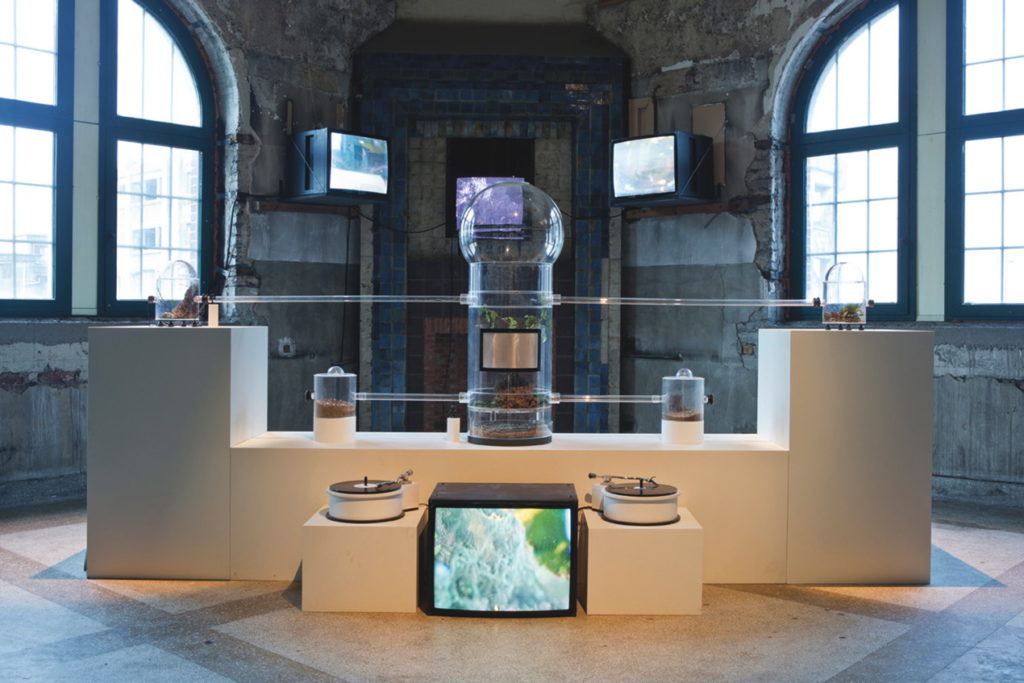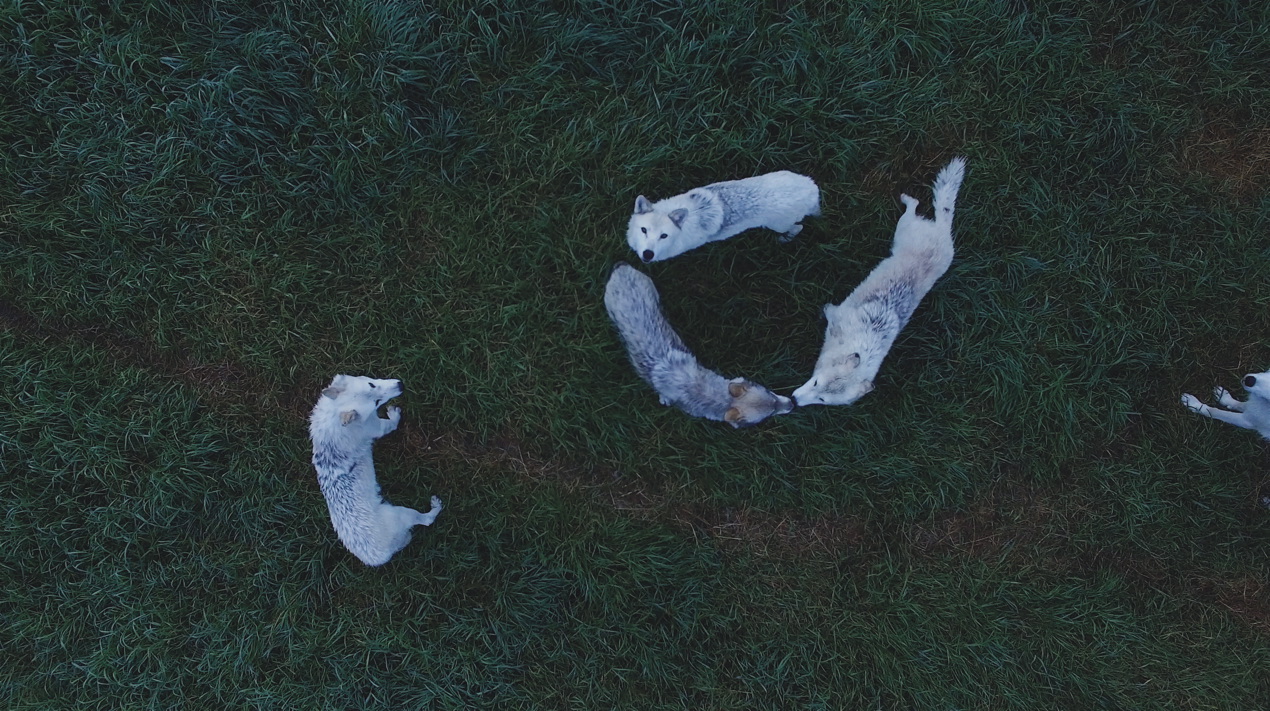Class menagerie
Ants play DJ sets and wolves use drone technology to watch humans in an intriguing new digital exhibition at Liverpool’s FACT
A family of Nigerian chimps, distracted by whatever is going on beyond the video, greet the visitor to the new exhibition at Liverpool’s FACT gallery. And Say The Animal Responded? offers a life-size slice of nature in the heart of Liverpool.
Five international artists and groups try to bring the voices of animals to life and interpret what they might be trying to tell us. The exhibition explores how animal behaviour can be used to create something new through human technology.
The exhibition weaves a journey past 0h!m1gas, the work of Ecuadorian artist Kuai Shen, which shows a colony of leafcutter ants become DJs. Shen achieved this by tracking the movement of the ants and using it to control turntables. The movements come from the chemicals the ants release when they communicate, touching each other, and stridulations – the vibrations they make when they shake their abdomen.
Move on to peep over at Demelza Kooij’s projection of a drone shot of wolves as they stalk the land below, silently communicating between themselves. But their occasional glances above let us know they’re being watched. Kooij demonstrates that the technology we use to observe animals can affect their behaviour.
“At a time when we need to rethink our relationship with the planet, it is timely to consider the nature and rights of animals,” says Nicola Triscott, FACT’s new director, who curated And Say The Animal Responded? “The exhibition brings visitors into close encounters with non-human animal intelligence and communication, prompting questions about whether humans are truly distinct from other animals and our responsibilities towards them.”

Alexandra Daisy Ginsberg invites you to sit down and appreciate the dawn chorus in her installation Machine Auguries. Her sound installation urges you to think of how bird song has been affected in urban areas by light and sound pollution. A frantic, louder and longer dawn chorus has emerged as birds feel the increased need to mark their territory and find a mate. The installation is a combination of a natural dawn chorus and artificial bird sounds – raising questions of how the urban soundscape might sound with a change in bird behaviour. Accompanying the sound is a light box that reflects the changing colours of dawn.
Opposite is another of Ginsberg’s installations, The Substitute. It too uses artificial life forms to raise the question of ever-decreasing animal species. Ginsberg was inspired by the death of the last male northern white rhinoceros in Sudan in 2018 and is using artificial intelligence to project a life-size rhinoceros that looks increasingly more real as it moves around the virtual world created for it.
The underwater world is not forgotten. Mexican artist Ariel Guzik’s The Nereida Capsule explores how we perceive nature through mysteries and fantasy. In the centre of Guzik’s exhibit is a musical instrument he designed to submerse in the ocean and connect with the sea creatures below. The instrument is intended to create vibrations that lure out the songs of whales and dolphins. Its recordings are played alongside drawings and other sculptures depicting marine life, boats and deep sea creatures.
Spread out between only two rooms, sometimes the sounds become muddled and it’s unclear which belongs to which installation – but that’s just the reality of nature and its competing sounds. We are forced to use our senses when we think about animals and, maybe, how they feel about us.
And Say The Animal Responded? is at FACT, Liverpool until 13 December (fact.co.uk)

Leave a reply
Your email address will not be published.